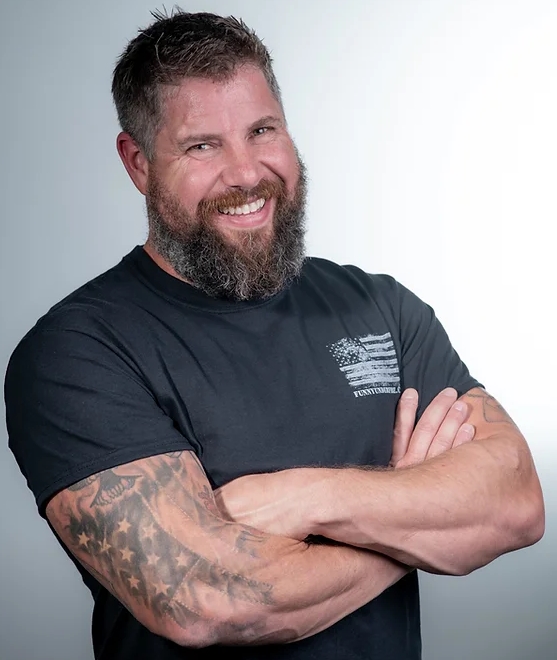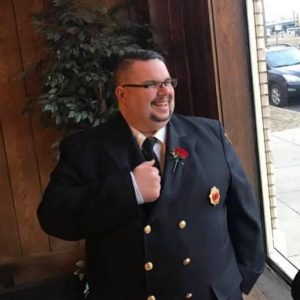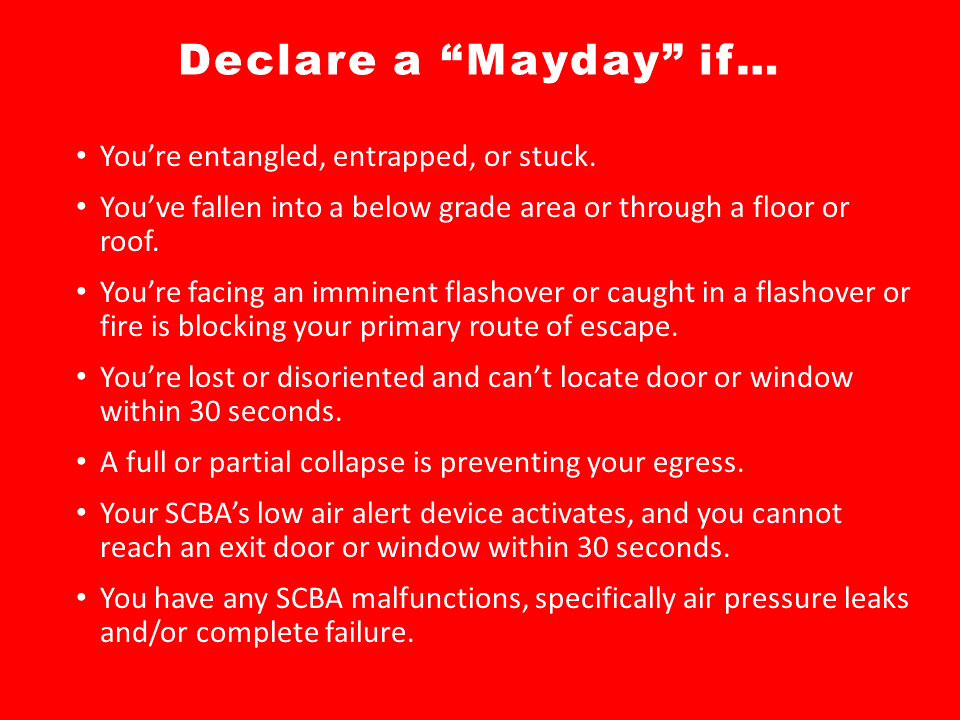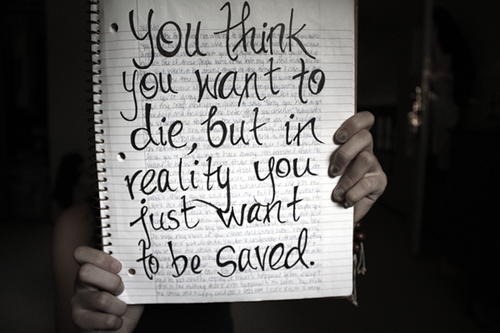Firefighters are well-trained in fireground mayday declarations and response, but lack a similar procedure for off-duty mental health emergencies
By Robert Avsec, Executive Fire Officer
“You all know how to declare a mayday when you’re on duty. But how do you declare a mayday when you’re off duty?”
That was the first question Travis Howze posed to the attendees at the 5th Annual Firefighter Health and Wellness Conference in Beavercreek, Ohio, where his keynote presentation captivated the audience from beginning to end.
Howze, a former U.S. Marine, didn’t whisper the question to attendees. Howze – who is also a police officer in North Charleston, South Carolina, and a firefighter with the Charleston Fire Department – is a dynamic and passionate speaker who doesn’t mince words about first responder mental health issues like suicides, PTSD and substance abuse or his own mental health struggles.
Firefighter Health and Wellness Conference
The driving force behind the Firefighter Health and Wellness Conference is Brothers Helping Brothers (BHB), a tax-exempt 501(c)(3) organization, founded in 2014. Since its launch, BHB has given out 14 grants to advance its mission of “Helping Small and Rural America, One Fire Department at a Time,” to fire departments in Ohio and surrounding states.
The genesis for the conference, according to Nick Magoteaux, founder and co-director of BHB, came in early 2018: “I was doing a fire EMS conference then, and I saw that there was a lot of interest in firefighter cancer. But not much on mental health. So, I got to thinking that mental health was a topic that needed attention.”
That early thought came to fruition with the first BHB conference later that year.
“We started with a small conference using local resources and speakers and a $5 registration fee,” Magoteaux shared. “From there, we just kept trying to grow the conference by offering presentations on physical health that addressed the cancer issue and we began to add more info on firefighter mental health. Last year, 2021, was kind of a breakthrough year where we saw more interest on firefighter mental health than firefighter cancer.”
It was during his tenure with the Charleston Fire Department that Howze responded to the 2009 Sofa Super Store fire that claimed the lives of nine of his brother firefighters, including his good friend, Louis Mulkey. His vivid description of his efforts and those of his brother firefighters to recover the bodies of their fallen comrades had many in tears.
From that heart-wrenching story, Howze dove into the meat of his presentation. He started by playing a graphic video of a traffic stop by a fellow North Charleston police officer and close friend on the job who, after frisking the driver for weapons, found himself facing the subject, who was now somehow armed with a 0.22 caliber handgun. The officer responded by firing five shots into the subject, who then fell into a ditch.
Turning his attention to the radio collar mic to call for backup, the officer did not see that the subject in the ditch was still armed. From the ditch, he fired a single shot that struck the officer in the armpit, missing his ballistic vest, with the bullet severing the officer’s aorta. The remaining audio on the video, where the dying officer continued to transmit his status to the officers responding to his call for backup, brought on another round of tear-filled eyes in the conference attendees.
How do you call a mayday on duty?
After the video, Howze posed the question, “How do you call for a mayday on duty?” Attendee responses included:
- Push the mayday button on my radio.
- Push the mayday button on my remote mic.
- Activate the PASS feature on my SCBA or standalone PASS device.
- Declare a mayday over the radio.
“That’s great!” Howze said, followed with: “Let me say again you all know how to declare a mayday when you’re on duty. But how do you declare a mayday when you’re off duty?”
Silence from the audience.
How do you call a mayday off-duty?
What Howze was really asking us was how do we declare that we’re in trouble mentally or emotionally.
“We don’t teach our people enough about how to determine they have a problem and how to ask for help when we’re off duty,” Howze said. “So, we internalize those feelings and we ‘suck it up‘ because our culture tells us that admitting we have a problem or seeking help is a sign of weakness. And so, the downward spiral begins.”
He went on to say that we don’t talk to people about our problems, especially people who we think don’t or won’t understand, such as spouses, significant others or friends.
“Pretty much anyone except those we work with,” Howze said. “And we don’t talk about our problems with them because we don’t want to be seen as a weak link.”
Sharing personal stories, Howze left no stone unturned as he described his own mental health downward spiral, which included alcohol abuse and dangerous on-duty behaviors.
“Only after I hit rock bottom, and got the help I needed, did I realize how much I’ve been putting myself and my fellow firefighters in danger,” Howze said. “I was also putting my family and everyone I knew in danger through my behaviors.”
Where are we missing the boat?
Howze wrapped up that first morning session by asking the audience how many of their fire departments had learned and practiced Denver Drills. And how many have training props for those drills. Almost every person in the audience raised their hand in response to both questions.
Then he asked, “How many firefighters have died in situations covered by Denver Drill training since we started doing that training?”
More silence.
He then asked, “How many firefighters have died by suicide since we started Denver Drill training?”
Silence.
“Suicides for firefighters have been outpacing fireground line-of-duty deaths for at least a decade,” Howze said. “Firefighter suicides are the epitome of an off-duty injury or illness, so where’s our sense of urgency?”
A great question. Where is our sense of urgency for putting the time, energy and resources toward eradicating the adverse effect that stress and exposure to trauma are having on our firefighters and officers?
We need to develop “Mental Health Mayday” procedures and training that model what we’ve done for fireground maydays.
Steps to develop a mental health mayday process
First, fire departments, with assistance from mental health professionals, must create a process and training program for their personnel, just like we did with fireground mayday, so that their people can recognize when they are having an off-duty mental health emergency. That procedure must include what actions they should take to declare a mental health mayday. The procedure should clearly define the resources available and how a member can get access to those resources.
As part of that work to develop a procedure and training, fire departments should seek out mental health clinicians in their community that have an interest in learning about the fire service culture and how firefighters do what they do.
Finally, a fire department’s procedure and training must include informing and educating its members on how to respond to a fellow firefighter’s off-duty mental health mayday declaration. A good place to start would take a page from the fire department’s fireground mayday training and education: Rid the organization of the stigma about firefighter being viewed as weak because they’ve declared a mental health mayday, just as we had to get rid of the idea that declaring a fireground mayday was a sign of weakness or incompetence.
There is no room any longer to view firefighter mental health issues as anything other than an injury to the brain. An injury that impairs the brain’s ability to process and make sense of the trauma and stresses that firefighters face daily on the job.
 Fire & EMS Leader Pro The job of old firefighters is to teach young firefighters how to become old firefighters!
Fire & EMS Leader Pro The job of old firefighters is to teach young firefighters how to become old firefighters!



